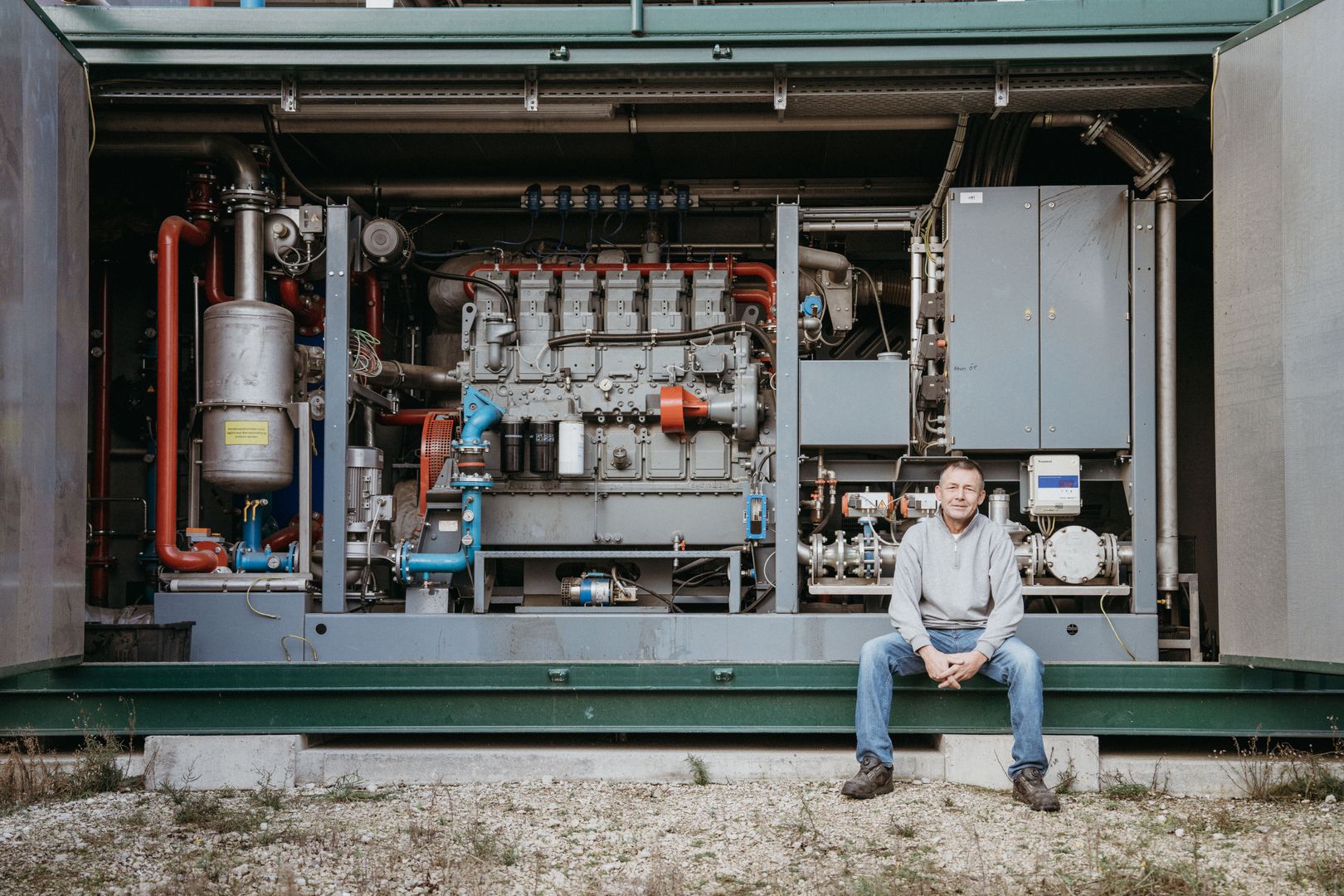Flexible across the board
"This is my energy storage facility," explains Jörg Kautt, smiling as he points to the maize silage and the slurry tank. Together with two other farmers, the agricultural and energy farmer operates a biogas plant on the edge of the Swabian Alb that does more than just produce electricity and heat. With its flexibility, the plant is now designed to act as a buffer in the event of a lack of solar and wind power feed-in.

"We can't compete with wind and solar power in terms of price," he says realistically. "Our raison d'être as biogas sector lies in on-demand power production. 24/7 electricity production with biogas is a thing of the past." Since 2021, the plant has been expanded with additional CHP capacity and increasingly produces electricity when it is in demand and correspondingly expensive. The collaboration with the flexibility expert Next Kraftwerke, a company that serves all markets from the day-ahead market to continuous indraday trading, ensures that the flexibility is optimally placed and generates correspondingly high revenues.

"Overall, we produce even less electricity than before, even though we have significantly more capacity after the CHP upgrade," explains Jörg Kautt. "But we earn more". Last year, he generated 80,000 euros more revenue compared to a conventional "flat" operation - undoubtedly in an exceptional year that was characterised by strong price fluctuations on the short-term electricity markets. Two CHP units at the site and a satellite CHP unit add up to a total capacity of 950kW, with heat and gas storage providing additional on-site flexibility. On average, the plant runs in two cycles every day, i.e. it is ramped up and down twice to cover the most expensive hours in day-ahead trading on the spot exchange.
Jörg Kautt regularly adjusts the schedules with the price forecasts he receives from Next Kraftwerke through the customer portal, as well as the feeding of the biogas plant. "It just has to fit into the overall operation," he summarises. Has the extra work involved in flexible operation paid off? "Definitely," he is certain. Today, the plant only runs very rarely in low-price phases and only to ensure the production of the required heat when off-peak prices last longer and the heat storage system is exhausted.
However, the flexibility available from the biogas plant does not stop there. It also provides the transmission system operators with control reserve to stabilise the power grid - provided the trader offers access to this market. At Next Kraftwerke, the algorithm of the virtual power plant processes the accepted spot market schedules and bids the plant for the supply of negative automatic frequency restoration reserve (aFRR) or manual frequency restoration reserve (mFRR) in the available times on the control reserve market. "This works well," says Jörg Kautt as matter-of-fact feedback, which shows that the cross-market optimization of bioenergy assets on various flexibility markets - considered almost impossible just a few years ago - is already common practice at Next Kraftwerke today.
Another component of the power trading toolbox was added in 2022. "That was more about my personal flexibility, because things had to happen quickly," comments Jörg Kautt with a laugh. Exceptional price opportunities presented themselves on the long-term futures market, which were quickly seized with the help of a PPA product realised at Next Kraftwerke. Jörg Kautt decided to sell half of his electricity production for 2023 at a fixed price via a Power Purchase Agreement. "As farmers, we are used to fluctuating prices, even on the futures markets. However, I only sell the quantities that I am certain to have, which is why I have opted for a PPA with 50% of the expected annual electricity production. Here, as with all other issues relating to electricity trading, I worked closely with the regional contact at Next Kraftwerke, which is really important to me. Everything works well, I am very satisfied with the cooperation.
"And do you want to know what else is flexible here?" he asks with a grin. As farmers, they had agreed to feed the biogas plant with as much self-sufficiency as possible. "One brings in the slurry, the other the grass and maize and we also have almost two hectares of flowering plants - Veitshöchheim mixture - which we add. And the proportions vary depending on the harvest. We are quite flexible in this regard..."
Facts
| Installed CHP capacity: | 500kW electrical and 200 kW electrical on site, plus 200 kW at the satellite site with heat supply for a neighbouring hotel |
| Gas storage: | 1500 cubic metres |
| Heat storage: | 50 cubic metres |
| Products used: | Power Trading, Power Scheduling, Balancing Energy |


